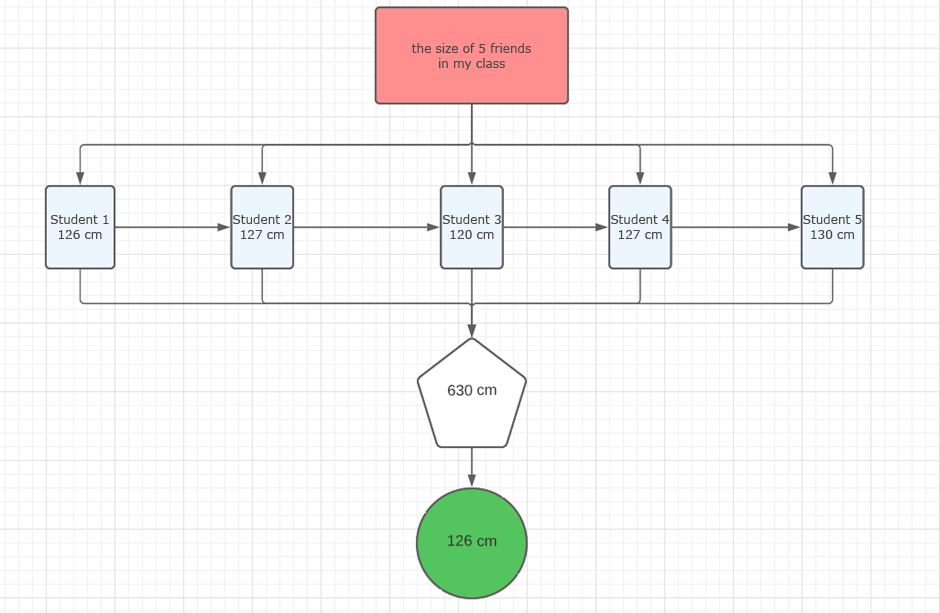C3.1 Solve problems and create computational representations of mathematical situations by writing and executing code, including code that involves sequential, concurrent, and repeating events.
Activity 1: Mean
Ask students to read the following flow chart.
 image LogigrammeThe framework outlines ‘the high of five friends in my classroom’. 5 subcategories have friend 1, 126 cm, friend 2 with 127 cm, friend 3 with 120 cm, friend 4 with 127 cm, an friend 5 with 130 cm. The total sum of the heights are outlines in a pentagon with 630 cm. The pentagone is related to a circle which has 126 cm.
image LogigrammeThe framework outlines ‘the high of five friends in my classroom’. 5 subcategories have friend 1, 126 cm, friend 2 with 127 cm, friend 3 with 120 cm, friend 4 with 127 cm, an friend 5 with 130 cm. The total sum of the heights are outlines in a pentagon with 630 cm. The pentagone is related to a circle which has 126 cm.
Ask students to write a code based on the flow chart.
Ask students to compare their codes.
Ask the following questions:
- Are there any similarities?
- Are there any differences?
- Are there any other code options?
- Who used the loop inside their code?
- How can we use the loop inside these codes?
Activity 2: Geometric Reasoning (Solids)
Have students write a code that traces the creation of a cube, prism or pyramid.
Ask students to exchange their code with a partner.
Ask students to predict the outcome of their partner's code execution, i.e., predict the development of the solid that will be drawn.
Activity 3: Equalities and Inequalities
Have students write two codes:
- A code that demonstrates an equality.
- A code that demonstrates an inequality.
Have students use addition, subtraction, multiplication, division or other means (e.g., pictures).
Display the codes and make a code gallery.
Discuss with students the relationships of equality and inequality based on students' codes.
